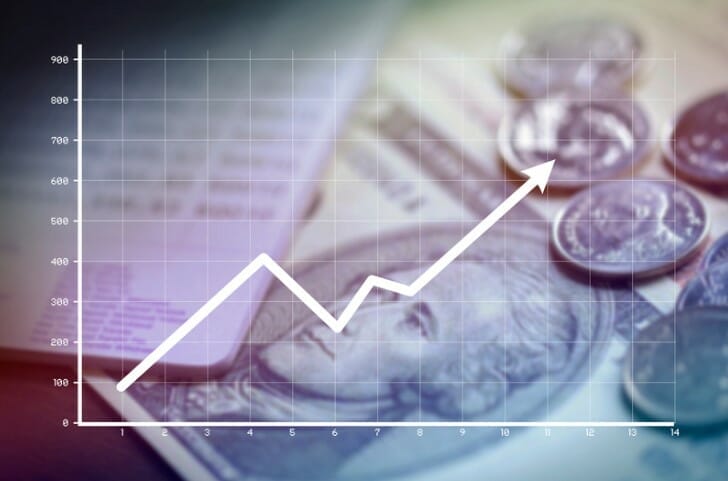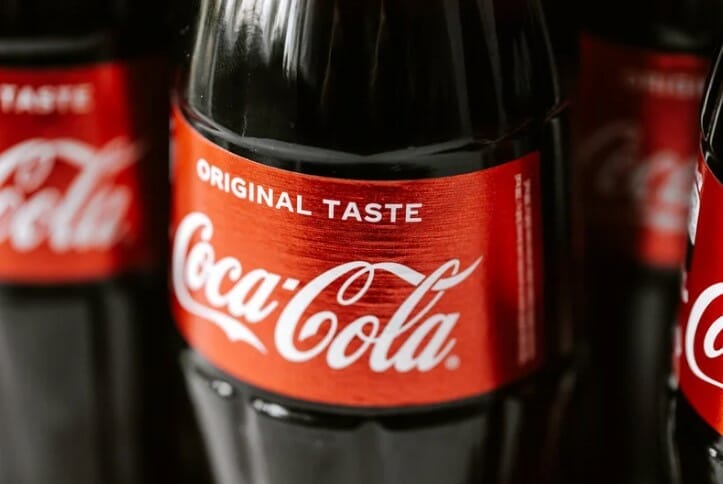Post Updated: 6/30/2023
When you look through the history of Warren Buffett’s career, you see a few key decisions that fueled so much compounding of capital. These include GEICO, American Express, the Washington Post… and of course, Coca Cola.
In fact, Warren Buffett’s Coca Cola investment represented up to 40% of his portfolio in 1990; to say it contributed to Berkshire’s success is an understatement.

In this post we will discover the secret behind the sauce that made Coca Cola great in the 80’s and 90’s, with insights from a book called I’d Like to Buy the World a Coke by David Greising.
Table of Contents
- Being Innovative, Failing Fast, Cutting Losses Short
- A Coca Cola Secret to Success: The Bottler Renovation Model
- $KO: It’s Always Been a Great Investment
- What a Story
I’d Like to Buy the World a Coke covers CEO Roberto Goizueta’s fascinating life. It started from his upbring in Cuba, to his dramatic escape to the United States, and his rising up the ranks after starting as an engineer.
Roberto Goizueta drew large fanfare during his reign as Coca Cola’s CEO. After all, in a few short years after taking over the CEO spot and then Chairman, he led the company to such success that shares of its stock quadrupled.
Goizueta managed this while also continuing to grow the dividend consistently. He also allocated more of the company’s earnings to be reinvested into the business. This greatly helped Coca Cola achieve absolute global dominance in the soft drink space, especially over rival Pepsi.
Being Innovative, Failing Fast, Cutting Losses Short
The Pepsi vs Coke rivalry had always been a chief concern around Coke executives, for obvious reasons. There’s quite an advantage to holding the #1 market share position in any market. But during Goizueta’s time as leader, this intensified.
Pepsi had success in the 1970’s with what was called the Pepsi Challenge. It made a huge impact on consumers, which helped the company steal market share from Coca Cola in the critical United States region.
Goizueta was not happy with those developments and completely shook up the business in order to fight back against Pepsi. He ruthlessly cut parts of the business that were not earning sufficient returns on capital. These included the unprofitable wine and beer business, among others. Goizueta was not shy about trying lots of new ideas to create the next catalyst for the company’s growth.

He launched failures like “Tab” and “New Coke”, yet within those failures were other launches that had massive success– such as Diet Coke.
Goizueta tried buying Columbia Pictures to get synergy and prestige for Coca Cola’s advertising. This didn’t work, it only created many more headaches and less efficient returns than expected, so he cut his losses quickly. And he did so at a handsome profit.
A Coca Cola Secret to Success: The Bottler Renovation Model
Other investments were much more successful for the company. In particular, Coca Cola would buy ownership interests in the bottlers that manufactured the Coke product using the company’s secret formula.

But it wasn’t the actual investments in the bottlers that created the great success, it was the model.
While investing in these bottlers, Goizueta would apply Coke’s expertise to vastly improve operations. Bottlers became more efficient and pumped out higher quality products. After making these turnarounds, Coca Cola would effectively re-sell many of these investments at a profit. This also tended to provide pressure to the low quality bottlers that were dragging down the rest.
Goizueta took this great and innovating bottling model and expanded the company’s global reach immensely.
Looking abroad, the company’s international segment provided as much as 80% of the company’s overall profits by 1996. This fueled much of the growth behind the company’s earnings (amplified by the weakness of the dollar in the late 80’s).
Overall, Warren Buffett found Coca Cola’s stock attractive even though it was expensive by “traditional” standards. For example, the stock had a Price to Book of around 4. Despite this, Buffett achieved superior performance by simply riding the coattails of Roberto Goizueta and Coca Cola’s brand.
Buffett bought Coca Cola right after the 1987 crash, after the market as a whole lost around 25%. We can speculate why, but the superior ROIC and consistent earnings growth had to be factors in deciding to pay 4x book. Goizueta’s 7 year track record at time of purchase may also have been a factor.
There were several lessons to take away from I’d Like to Buy the World a Coke.
Not only did the company have many opportunities to grow both domestically and internationally, they had a fierce and innovative leader. Robert Goizueta was not afraid to aggressively chase high returns on capital and growth, in many ways (read the book to see it all).
$KO: It’s Always Been a Great Investment
What I found so interesting while reading this book as an investor is that Coca Cola was long considered a dominant player and stock, even before Warren Buffett got into the picture. In fact, their ticker symbol, $KO, was labeled so in the early 1900’s because the stock was such a knockout performer back then that it was considered a “KO” to buy, because you couldn’t lose by buying it.
I loved reading about the Fortune magazine clipping that Goizueta kept inside his desk for motivation. It reads:
“Several times every year a weighty and serious investor looks long and with profound respect at Coca-Cola’s record but comes regretfully to the conclusion that he is looking too late. The specters of saturation and competition rise before him. He hears dire rumors of the inroads made by Pepsi-Cola and some new up-and-coming soft drinks– and he reluctantly passes Coca-Cola by.
But Coca-Cola steadily sweeps on.”
What’s great about that quote was that it was from a Fortune magazine issue from 1938, long before Goizueta and Buffett were in the picture. And, incredibly, the stock rose to even higher astronomical heights as the decades continued.
It might be one of the most valuable lessons of the book, and that’s that you don’t have to reinvent the wheel when it comes to investing.
Warren Buffett bought Coca Cola knowing that it was one of the best businesses around at his time and for many decades before. Yet, just because the stock and business had already grown so much, didn’t mean that it couldn’t be a great investment for years to come.
What a Story
As the book concludes, you find out that Goizueta continued to focus on building Coke’s incredibly strong brand and its emotional connection with customers.
From having a huge, behind the scenes influence in attracting the 1996 Olympics in the Coca Cola hometown (city of Atlanta), to their willingness to shake up their advertising agency, to their inclusion of top celebrities to promote the brand for decades and decades…
It was clear that Coca Cola wasn’t afraid to spend big money to make big money and compound returns for investors.
Behind it all was CEO Roberto Goizueta, who spent lavishly while honing down on expenses and low ROIC projects. That worked out great for Buffett, who brings in over $650 million per year in dividends alone from his 1988 investment in Coke.
That’s my kind of party.

Andrew Sather
Andrew has always believed that average investors have so much potential to build wealth, through the power of patience, a long-term mindset, and compound interest.
Related posts:
- The Intelligent Investor: Is it Outdated? Is it for Beginners? Should I Read it? Edited 3/24/2023 Warren Buffett started learning about investing when he was seven or eight. I know a late bloomer. Buffett’s father started a small investment...
- Warren Buffett Buys American Express Updated 9/3/2023 American Express was one of the turning point investments for Warren Buffett. It began his path to becoming the investor he is now....
- The Essays of Warren Buffett: A Complete Book Summary I feel like I’ve been reading the Essays of Warren Buffett for literally a lifetime, and although it hasn’t nearly need that long, it does...
- 4 of the Best Value Investing Books Recommended by Top Investors Updated 6/30/2023 So, you’ve reached the point in your investing career where you’re looking for the best value investing books out there for you to...
